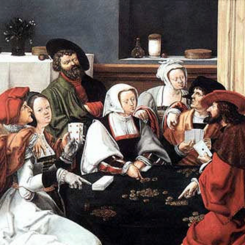Chinese Jokers
Chinese playing card makers have probably produced the widest variety of jokers of any single part of the world.
Chinese playing card makers, whether they be based on mainland China, Hong Kong, Taiwan or even Macau, have a reputation for imitation and replication fused with innovation which has produced perhaps the widest variety of joker playing card designs of any single part of the world.
Designs copied in whole or part from Western classic designs are chiefly limited to the more prolific, later American, British and Belgian classic designs by the US Playing Card Company, Waddington's, Cartamundi but also encompass designs by Consolidated-Dougherty, Arrco, Hoyle, Brepols, Biermans and Ducale.
Copies such as this Chinese version of the classic “Bee No 92" poker deck marketed under the brand name BCG are clearly copies rather than fakes.

Above: Bee No.92 original joker and Chinese copy.
While this anonymous copy of the classic Waddington’s standing jester is a poor quality fake in which no attempt has been made at originality.
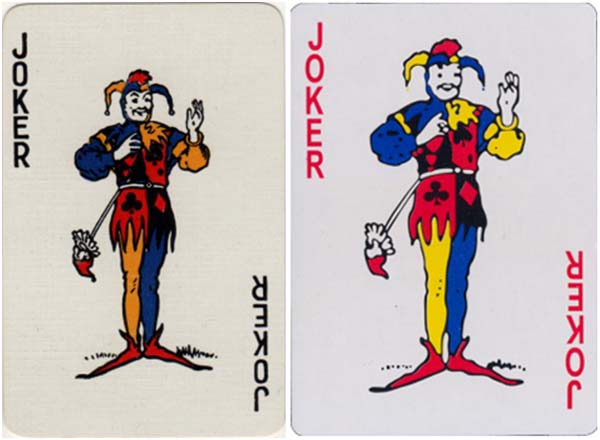
Above: Waddingtons original joker and Chinese copy.
Chinese versions are often easily spotted by the poor quality printing, paper, and the custom of producing one joker card in colour and another in monochrome or even just not coloured black and white, as this Arrco inspired Chinese pair illustrate.
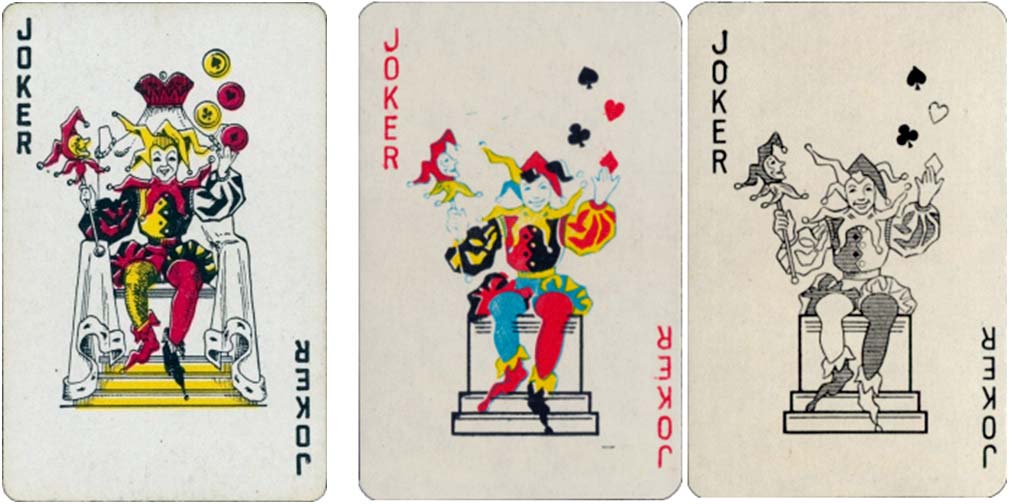
Above: ARRCO original joker and Dragon brand copies in colour and B & W.
The later Arrco laughing head jester inspired a run of Chinese imitations with their own adaptations.
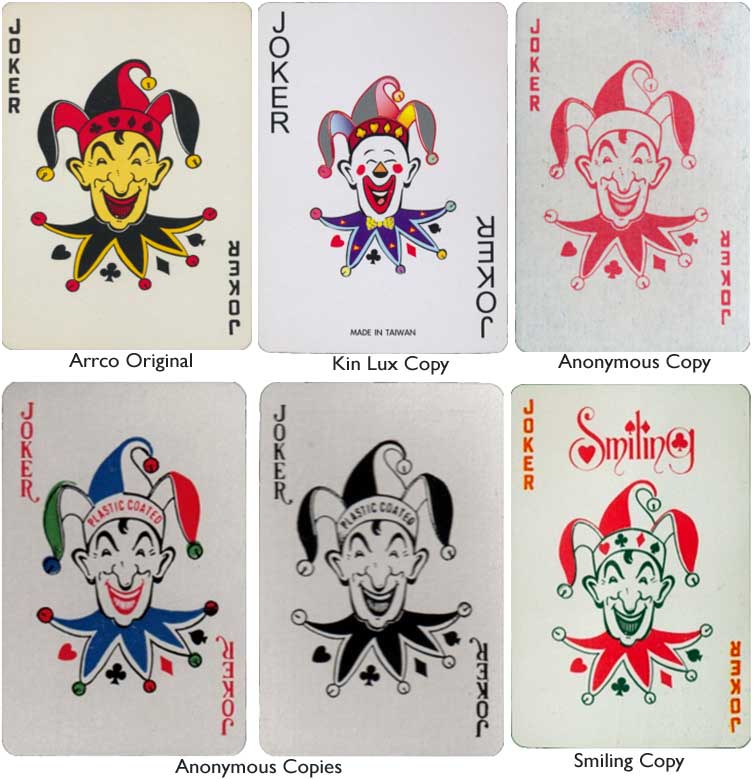
The US playing card company standing jester was copied but incorporating the colouring of the Waddington's standing jester to produce novel variations.

Above: US playing card company standing jester, 'Tiger' brand copy and another anonymous copy.
But not as interesting as this design which takes the jester’s face, head, and collar together with the yellow banner from the Cartamundi classic jester, applied to a Chinese original generic unicycling style design.
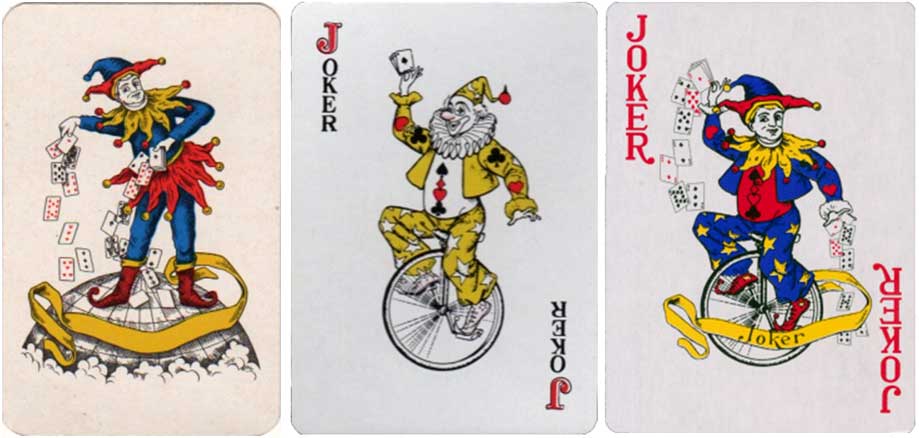
More Carta Mundi copies.

Above: Carta Mundi joker (top left) and various copies.

Above: Ducale joker (left) and copy.
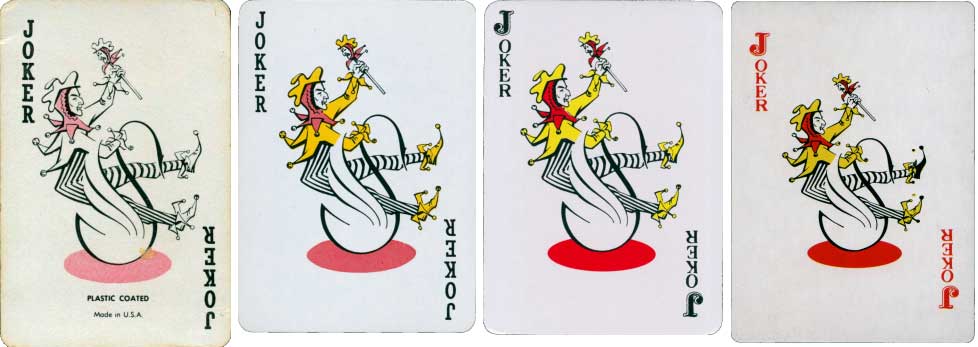
Above: Hoyle joker (left) and copies.

Above: Russell joker (left) and Michaud copy.
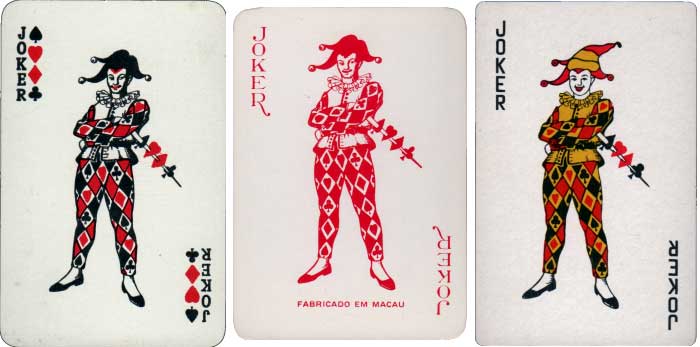
Above: De la Rue joker (left) and anonymous copies.

Above: Biermans joker (left) and anonymous copies.

Above: Piatnik joker (left) and anonymous copy.
Download Part 2► (980 KB PDF)
By Matt Probert
United Kingdom • Member since March 02, 2012
I have adored playing cards since before I was seven years old, and was brought up on packs of Waddington's No 1. As a child I was fascinated by the pictures of the court cards.
Over the next fifty years I was seduced by the artwork in Piatnik's packs and became a collector of playing cards.
Seeking more information about various unidentified packs I discovered the World of Playing Cards website and became an enthusiastic contributor researching and documenting different packs of cards.
I describe my self as a playing card archaeologist, using detective work to identify and date obscure packs of cards discovered in old houses, flea markets and car boot sales.

3 comments
Leave a Reply
Your Name
Just nowRelated Articles

Chinese Opera Masks Playing Cards 脸谱
Three different packs of cards featuring traditional Chinese face painting and Chinese opera masks.
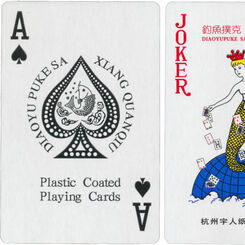
Diaoyu Poker 8068
8068 by Diaoyu Poker (China) 2019.

A Case Study
Case Study: using detective work to identify and date a pack discovered in charity shop.
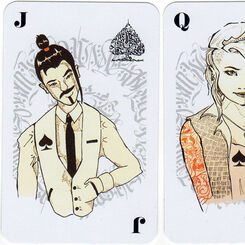
Ken McCarthy
An unknown deck by Ken McCarthy, c.2018.
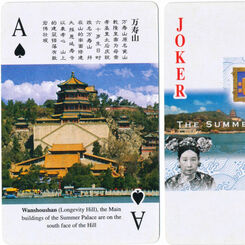
The Summer Palace
The Summer Palace, Beijing, China, c.1998.

Punch Studio: ‘Geisha Girls’
‘Geisha Girls’ playing cards published by Punch Studio, Culver City, CA., 2013

51: Some modern variations
A brief survey of some current variations in the standard English pattern.

SiRen International
“SiRen International” playing cards based on traditional style of Indian miniature painting, 1998

Lucky Buddha Beer
Deck made in China in c.2010 advertising the Chinese brew “Lucky Beer, the enlightened beer”

Terracotta Army
Each card has a different photo of elements of the terracotta army whose purpose was to protect the ...

Terracotta Warriors of Emperor Qin
“Terracotta Warriors of Emperor Qin” collectible playing cards, made in China, c.2010.

Prime Arts
Prime Arts Playing Cards were published in 2004 featuring the work of contemporary artists, illustra...

Chinese Roles of Beijing Opera
A very impressive deck of cards featuring 54 different images from “Chinese Roles of Beijing Opera” ...

Lock, Stock & Two Smoking Barrels
“Lock, Stock & Two Smoking Barrels” playing cards based on the cult film, 1999.

Modern Aces of Spades
Many modern aces of spades are anonymous so that, in the absence of any other information, the colle...

Mao Zedong & International Friends
Playing cards celebrating the story of the Chinese leader and statesman Chairman Mao / Mao Zedong & ...
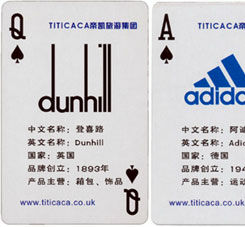
Titicaca ® Playing Cards
Each card in this novelty deck, subtitled “Funny Card”, carries information about a prestigious or p...

Monsters
A collective of artists known as Monster Illustration produced a deck entitled “Monsters” in 2004.
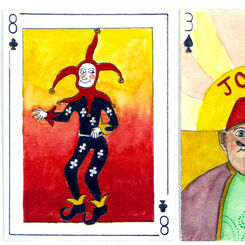
Jest Jokers
Peter Wood’s “Jest Jokers” comprising 54 different Joker designs made into a full pack of cards.
Most Popular
Our top articles from the past 60 days



 Your comment here. Your comment here. Your comment here. Your comment here. Your comment here. Your comment here. Your comment here. Your comment here. Your comment here. Your comment here. Your comment here. Your comment here. Your comment here. Your comment here. Your comment here. Your comment here. Your comment here. Your comment here. Your comment here. Your comment here. Your comment here. Your comment here. Your comment here. Your comment here. Your comment here. Your comment here. Your comment here. Your comment here. Your comment here. Your comment here. Your comment here. Your comment here.
Your comment here. Your comment here. Your comment here. Your comment here. Your comment here. Your comment here. Your comment here. Your comment here. Your comment here. Your comment here. Your comment here. Your comment here. Your comment here. Your comment here. Your comment here. Your comment here. Your comment here. Your comment here. Your comment here. Your comment here. Your comment here. Your comment here. Your comment here. Your comment here. Your comment here. Your comment here. Your comment here. Your comment here. Your comment here. Your comment here. Your comment here. Your comment here.
